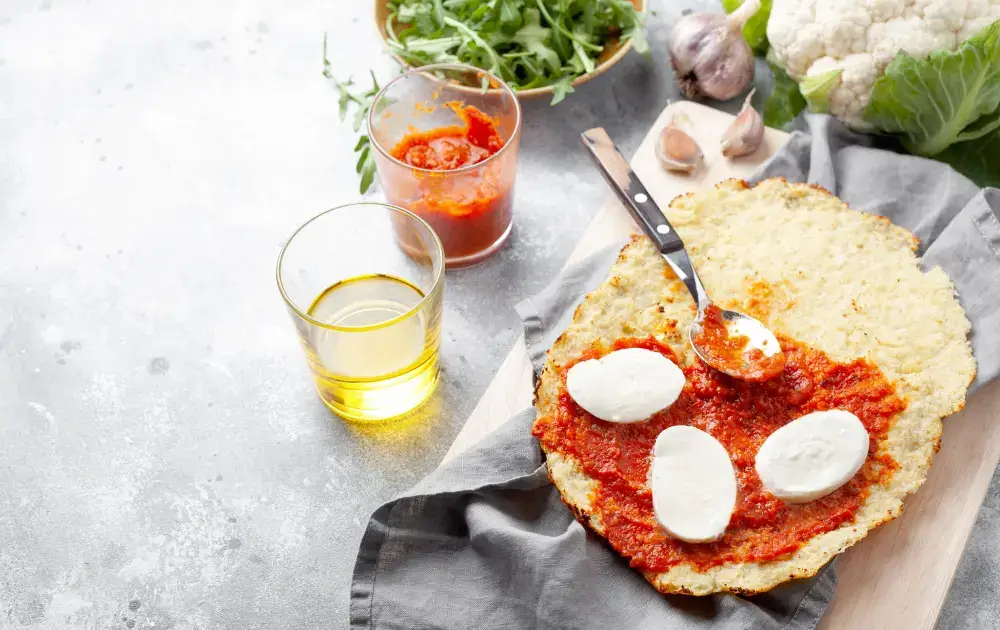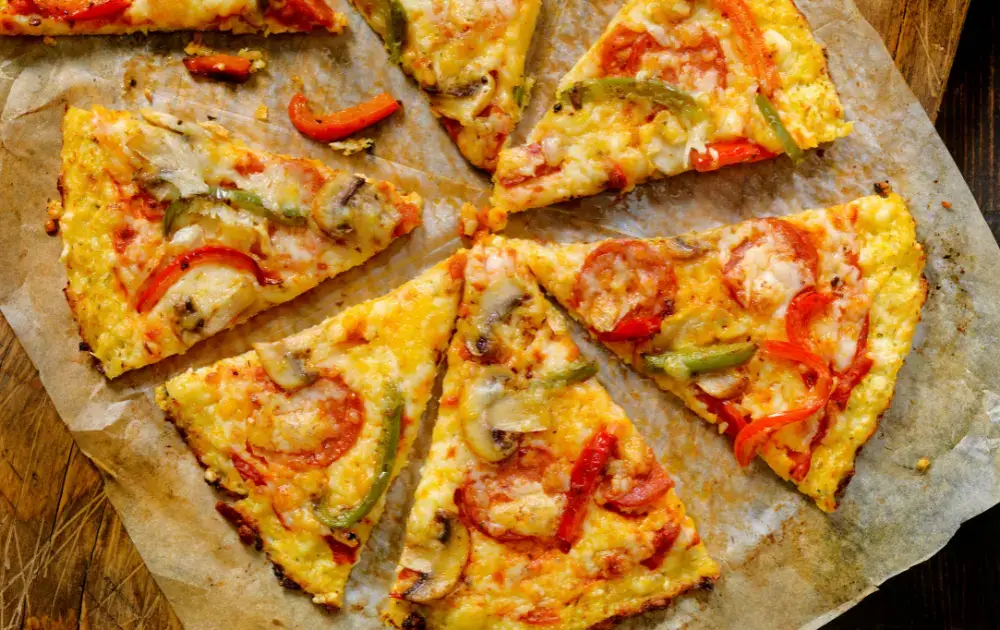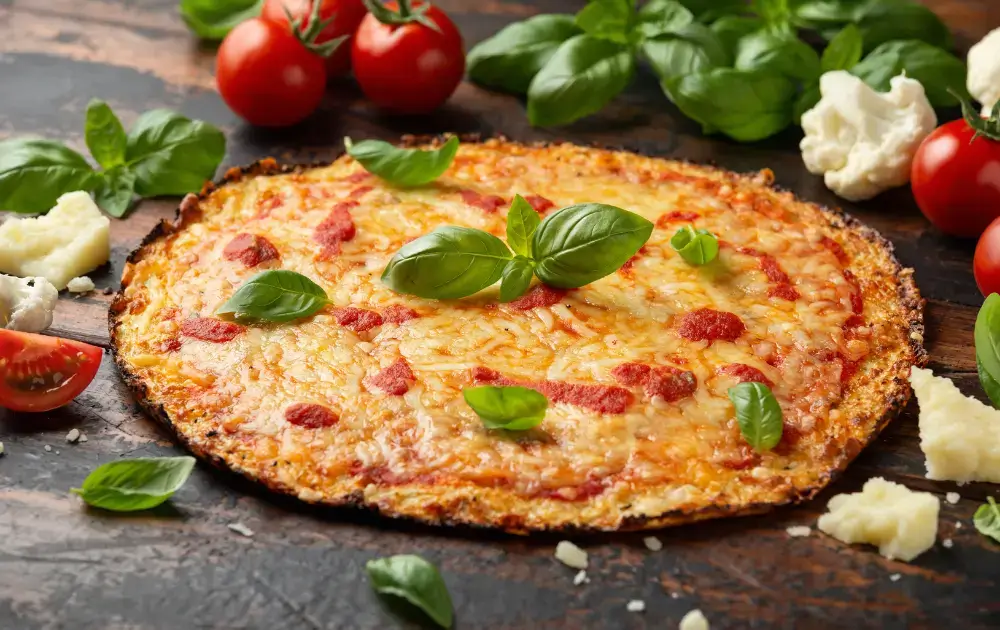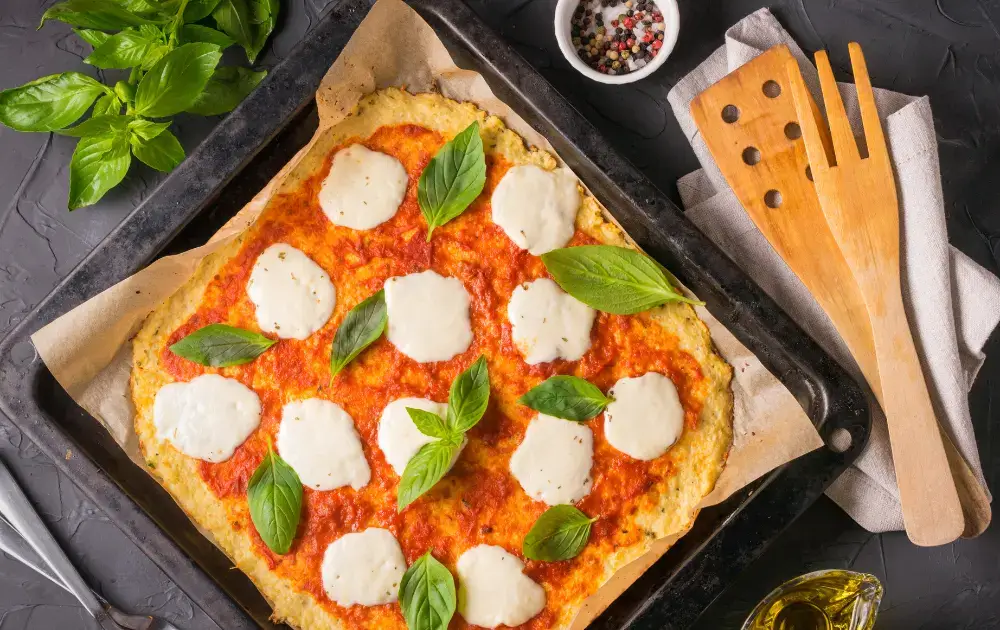Unlocking the Delicious World of Cauliflower Pizza Crust: A Healthier Alternative
Part1: Introduction
Cauliflower pizza crust has taken the culinary world by storm, becoming a popular alternative to traditional wheat-based crusts. This versatile and nutritious option has gained widespread acclaim for its unique texture and health benefits.
Transitioning from conventional pizza crusts, cauliflower crust has become a staple for those seeking a gluten-free or low-carb alternative. Its rise in popularity can be attributed to its ability to cater to various dietary preferences and restrictions. Embarking on an exploration of cauliflower crust, we will delve into not only its widespread appeal but also the health benefits that distinguish it as a standout choice in the realm of alternative crusts. Get ready to discover how cauliflower is transforming the pizza experience, one crust at a time.
Part 2: What is Cauliflower Pizza Crust
-
Definition and origin
Cauliflower pizza crust, a culinary innovation, redefines the traditional pizza base. Originating as a response to dietary preferences and restrictions, it has quickly become a household favorite.
-
Brief history
Transitioning from its humble beginnings, cauliflower crust emerged as a creative solution for those seeking gluten-free or low-carb alternatives. This transformative twist on a classic dish has roots in the health-conscious and wellness communities, where its popularity continues to flourish.
-
Key ingredients and nutritional value
At its core, cauliflower crust comprises simple ingredients – cauliflower, eggs, and seasonings – offering a nutrient-packed alternative to traditional pizza crusts. Rich in vitamins and low in carbohydrates, this crust not only caters to diverse dietary needs but also provides a unique and flavorful foundation for a healthier pizza experience. Let’s unravel the story behind cauliflower pizza crust and explore the nutritional benefits that contribute to its widespread acclaim.
Part 3: Benefits
Embracing cauliflower pizza crust comes with a myriad of benefits that cater to diverse dietary needs and health-conscious preferences.
-
Low-carb and Keto-Friendly Alternative:
Making the transition to cauliflower crust provides a low-carb alternative, seamlessly fitting the preferences of those adhering to ketogenic diets. Given its diminished carbohydrate content in comparison to traditional crusts, this option enables individuals to relish a pizza experience without jeopardizing their dietary goals.
-
Gluten-Free and Suitable for Gluten-Sensitive Individuals:
Cauliflower crust presents a gluten-free option, catering to those with gluten sensitivities or celiac disease. This alternative allows individuals to enjoy the satisfaction of pizza without triggering adverse reactions associated with gluten consumption.
-
High in Nutrients and Vitamins:
Beyond its role as a substitute, cauliflower pizza crust stands out for its nutritional content. Packed with essential nutrients and vitamins, including vitamin C and K, it transforms the pizza indulgence into a wholesome and nourishing experience. This not only satisfies taste buds but also contributes positively to overall well-being.
As we explore the benefits of cauliflower crust, it becomes evident that this alternative is not just about dietary restrictions; it’s a gateway to a healthier and more inclusive pizza enjoyment.
Part 4 : How to Make Cauliflower Pizza Crust
Making this pizza crust is a straightforward and rewarding culinary venture. Let’s explore the step-by-step process, key ingredients, and some invaluable tips to ensure your cauliflower crust turns out perfect every time.
-
Step-by-Step Guide on Preparing Cauliflower Crust:
Begin by grating or processing cauliflower into fine, rice-like grains. Afterward, cook and squeeze out excess moisture to achieve a dry consistency. Combine with eggs, seasonings, and any desired extras, then shape into a crust and bake until golden. This detailed guide ensures you master the art of creating a flawless crust.
-
Necessary Ingredients and Their Roles:
The core ingredients for a perfect crust include cauliflower, eggs, and seasonings. Cauliflower provides the base, while eggs act as a binding agent, ensuring the crust holds its shape. Seasonings, such as herbs and spices, add flavor to enhance the overall taste. Understanding the role of each ingredient is key to achieving the desired texture and flavor.
-
Tips and Tricks for a Successful Crust:
- Ensure thorough moisture removal from the cauliflower to prevent a soggy crust.
- Experiment with additional ingredients like cheese or almond flour for added texture and flavor.
- Pre-bake the crust before adding toppings for a crispier finish.
- Use parchment paper or a non-stick surface to prevent sticking during baking.
By following this comprehensive guide and incorporating these tips, you’ll effortlessly create a delicious and satisfying pizza crust, making your homemade pizza experience both enjoyable and healthy.
Part 5: Critique or comparison of the different recipes or methods
When assessing and comparing various cauliflower pizza crust recipes or methods, it’s crucial to consider individual preferences and desired outcomes. Each approach brings its own unique twist to this alternative crust, influencing factors like texture, flavor, and ease of preparation.
Simplicity:
Some recipes may prioritize simplicity, utilizing minimal ingredients for a quick and easy cauliflower crust. These options are perfect for those seeking a hassle-free alternative without compromising on taste. On the other hand, more elaborate recipes may incorporate additional ingredients like cheese, herbs, or alternative flours, aiming to enhance both texture and flavor.
Transitioning between these methods requires a keen understanding of personal preferences. If a crispy crust is the goal, pre-baking might be a common factor to consider across various recipes. Similarly, experimenting with the ratio of cauliflower to binding agents allows for customization based on individual taste and dietary requirements.
Comparing:
Critiquing or comparing cauliflower crust recipes becomes an exploration of culinary creativity. By evaluating factors such as simplicity, texture, and flavor, individuals can select a method that aligns with their preferences. This ensures that the experience of crafting and enjoying cauliflower pizza crust is not only delightful but also tailored to their unique tastes
FAQ:
What are the common mistakes when making cauliflower pizza crust?
- Overlooking proper moisture removal from cauliflower, resulting in a soggy crust.
- Failing to pre-bake the crust, which can impact its crispiness.
Can you freeze it?
- Yes, cauliflower pizza crust can be frozen for future use. It’s advisable to pre-bake, cool, and then freeze it, ensuring a convenient and quick option for busy days.
How does the taste compare to traditional pizza crust?
- Cauliflower crust offers a unique flavor with a subtle hint of cauliflower, however its taste becomes comparable to traditional crust, particularly when paired with flavorful toppings.
Are there any variations of cauliflower crust recipes?
- Absolutely! Variations abound, including those with added cheeses, herbs, or alternative flours. Experimenting with different ingredients allows for diverse textures and flavors.
Is cauliflower pizza crust suitable for those with dietary restrictions?
- Yes, it is a versatile option suitable for various dietary restrictions, such as gluten-free and low-carb diets. It caters to a broad range of preferences and needs.
Tips for Perfect Cauliflower Pizza Crust
Enhance your crust game with these expert tips that address common issues, boost flavor, and elevate your topping choices.
-
Troubleshooting Common Issues:
Soggy Crust Prevention:
Thoroughly squeeze out moisture from the cauliflower to avoid a soggy crust.
Pre-bake the crust before adding toppings for a crispier finish.
Enhancing Structure and Texture:
Experiment with adding almond flour or cheese to the cauliflower mixture for improved structure and texture.
-
Additional Flavor Enhancers and Seasoning Tips:
Herb and Spice Infusion:
Elevate the flavor profile by incorporating herbs like basil, oregano, or garlic powder into the cauliflower mixture.
Cheese Integration:
Introduce grated Parmesan or mozzarella to the cauliflower mix for added savory notes and a cheesy undertone.
Spice it Up:
Kick up the heat with a pinch of red pepper flakes or cayenne for a spicy cauliflower crust variation.
-
Suggested Toppings to Complement Cauliflower Crust:
Classic Margherita:
Fresh tomatoes, mozzarella, basil, and a drizzle of balsamic glaze.
Mediterranean Delight:
Kalamata olives, feta cheese, cherry tomatoes, and a sprinkle of oregano.
Vegetarian Feast:
Colorful bell peppers, red onions, mushrooms, and spinach.
Moving from troubleshooting to flavor enhancement and topping suggestions, these tips seamlessly ensure that your cauliflower pizza crust not only overcomes challenges but also transforms into a versatile canvas for a delicious and personalized pizza experience.
Cauliflower Pizza Crust in the Market
Explore the convenience and considerations of cauliflower crust options available in the market, weighing the pros and cons against their homemade counterparts.
-
Commercially Available Options:
Numerous brands offer pre-made cauliflower pizza crusts, available in grocery stores and online.
Options range from plain crusts to those infused with various flavors, catering to diverse tastes.
-
Pros and Cons of Store-Bought Cauliflower Crusts:
Pros:
Convenience: Ready-made options save time and effort.
Consistency: Commercial crusts often provide a consistent texture.
Cons:
Cost: Store-bought crusts can be pricier than making your own.
Ingredients: Some may contain additives or preservatives.
-
Comparison with Homemade Alternatives:
Pros of Homemade:
Customization: Tailor ingredients to your preferences.
Freshness: Control the quality of ingredients used.
Cons of Homemade:
Time-Consuming: Requires more time and effort.
Skill Level: Making a perfect crust may take practice.
Transitioning from exploring store-bought options to weighing the advantages and disadvantages against homemade alternatives provides consumers with informed choices based on their priorities and preferences.
Part6 : Conclusion
In conclusion, exploring cauliflower pizza crust has revealed its versatility, benefits, and various aspects, establishing it as a unique and healthy alternative.
-
Recap of Key Points:
Cauliflower crust is a popular and nutritious substitute for traditional crusts.
Its benefits include being low-carb, gluten-free, and rich in nutrients.
Crafting a perfect cauliflower crust involves careful preparation and consideration of key ingredients.
-
Encouragement to Try it:
Venture into the world of cauliflower pizza crust with confidence.
Experiment with different recipes and methods to find your perfect balance of flavor and texture.
-
Final Thoughts on Its Place in the Culinary World:
Cauliflower pizza crust has secured its place in the culinary world as a testament to innovation and health-conscious eating.
Its adaptability allows it to cater to a broad range of dietary preferences, making it a staple for those seeking a wholesome and delicious pizza experience.
As you embark on your cauliflower pizza crust adventure, savor the creative possibilities it offers and relish in the knowledge that a healthier pizza indulgence is just a crust away.
Print
Cauliflower Pizza Crust
- Total Time: 45 minutes
- Yield: One 10-inch crust
- Diet: Gluten Free
Description
A gluten-free and low-carb alternative to traditional pizza crust, crafted from cauliflower for a lighter and nutritious pizza experience.
Ingredients
🥦 1 medium-sized cauliflower head
🧀 1 cup shredded mozzarella cheese
🥚 1 egg, beaten
🌿 1 teaspoon dried oregano
🧄 1/2 teaspoon garlic powder
🧂 Salt and pepper to taste
Instructions
Preheat your oven to 400°F (200°C).
Cut the cauliflower into florets.
Pulse the florets in a food processor until it resembles rice. Microwave the cauliflower rice for 5-6 minutes or until tender. Let it cool, then place it in a clean kitchen towel and squeeze out excess moisture. In a bowl, combine the cauliflower, shredded mozzarella, beaten egg, oregano, garlic powder, salt, and pepper.
Transfer the mixture onto a parchment-lined baking sheet. Shape it into a thin, round crust.
Bake the crust for 20-25 minutes or until golden brown and firm to the touch.
Add Toppings:
Remove the crust from the oven and add your favorite pizza toppings.
Notes
– Thoroughly remove moisture from cauliflower for a crispier crust.
– Customize with herbs, spices, or alternative cheeses for varied flavors.
- Prep Time: 20 minutes
- Cook Time: 25 minutes
- Category: Main Dish
- Method: Baking
- Cuisine: Fusion
Nutrition
- Calories: 120
- Sugar: 2g
- Sodium: 220mg
- Fat: 8g
- Saturated Fat: 4g
- Carbohydrates: 6g
- Fiber: 3g
- Protein: 9g
- Cholesterol: 70mg














